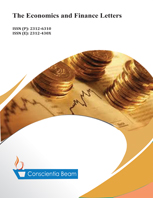Forecasting-Based Carry Trade Using Pegged Currency: A Case of Omani Rial
DOI:
https://doi.org/10.18488/journal.29/2016.3.2/29.2.21.29Abstract
This paper examines the profitability of using an emerging country, currency that is pegged to the U.S. dollar in carry trade against floating currencies. It also examines the effect of embedding forecasting techniques in its profitability and risk-adjusted returns. While carry trade is performed largely with currencies that adapt a floating exchange rate system, conducting such a strategy using pegged currency has proven to be very rewarding, especially when the strategy is enhanced with forecasting methods. Carry trade is a speculative strategy where carry traders take advantage of interest rate differential between two currencies. It is conducted by borrowing a low interest rate currency and investing in a high interest rate currency. According to uncovered interest parity (UIP), carry trade should not yield any profit. If investors are both rational and risk-neutral, then exchange rate changes will eliminate any gains arising from the differential in interest rate. But literature has shown that UIP does not hold. This failure has led to unprecedented returns for that strategy matching the returns of the S&P 500 and outperforming it in terms of Sharpe ratio.

